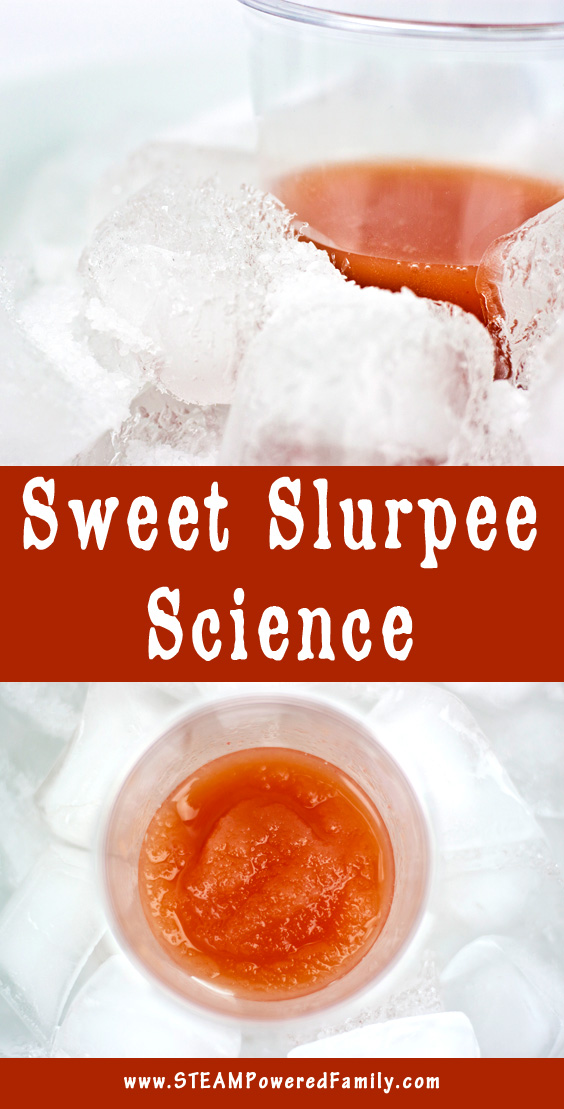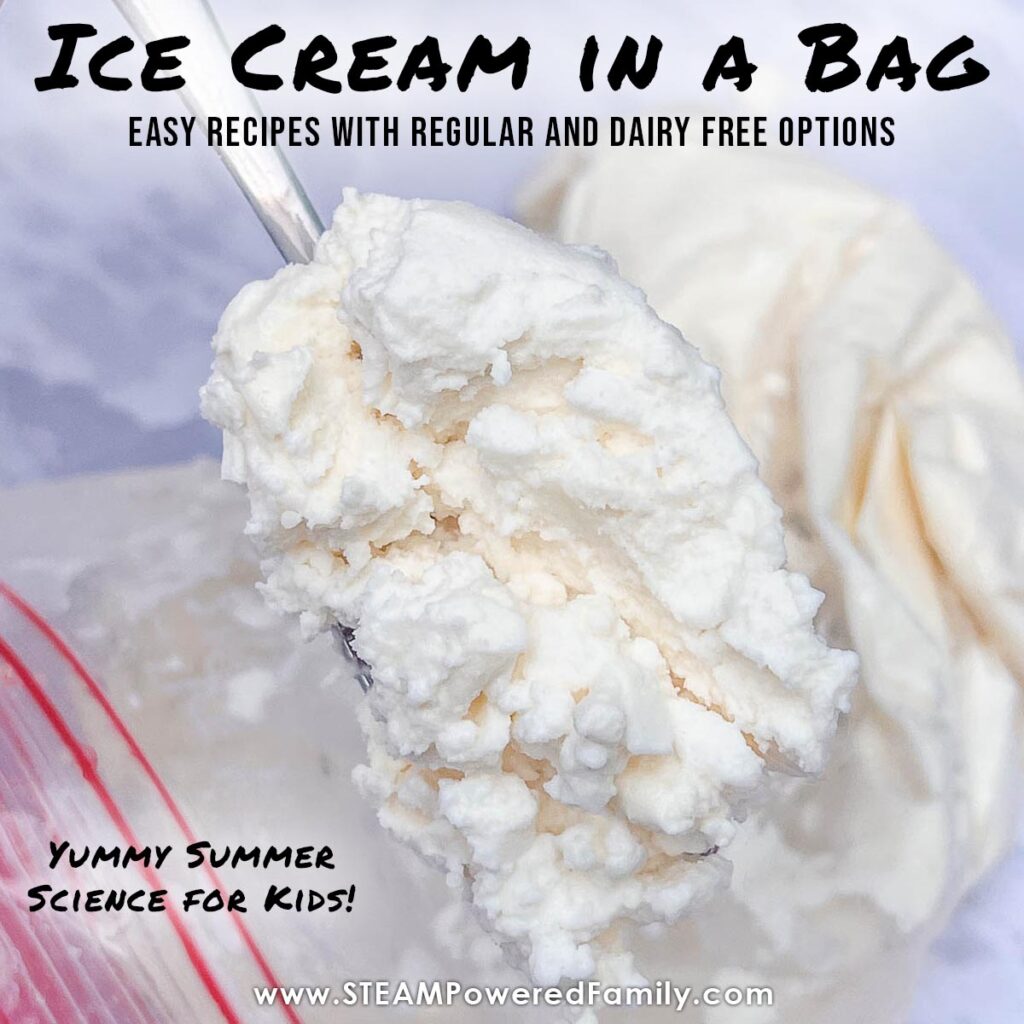How To Make A Slurpee At Home
Sweet slurpee science is a fantastic activity for kids, with a tasty result they will love. This simple heat transfer experiment is perfect for all ages.
Do you love slurpees? I have a couple of big slurpee fans around here. Kids love these sweet, frozen treats! Whether you call them slurpees or slushies, these frosty drinks are great, until the dreaded brain freeze! Today we are taking some inspiration from one of our favourite Winter STEM Activity experiments and learning how to make a slurpee at home.
Slurpee Science Experiment
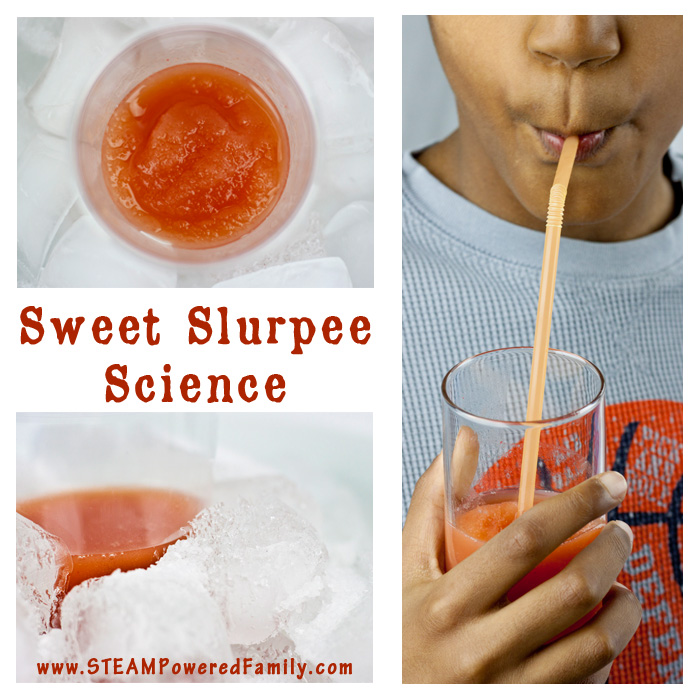
Disclaimer: This article may contain commission or affiliate links. As an Amazon Influencer I earn from qualifying purchases.
Not seeing our videos? Turn off any adblockers to ensure our video feed can be seen. Or visit our YouTube channel to see if the video has been uploaded there. We are slowly uploading our archives. Thanks!
As soon as the weather warms up my kids immediately start asking for slurpees! Which means it was time for this momma to find ways to work some science into their excitement for slurpees.
Did you know you can make slurpees at home with no special equipment and it is actually a fascinating heat transfer science experiment?
Now I’m going to be honest, this experiment is about as exciting as watching paint dry. That is until you can enjoy the fruits of all your patience waiting for the science magic to happen! I highly recommend you do this experiment when you have other things to do. It would be fantastic for a group or class to set up at the beginning of their day so it will be finished in the afternoon for a nice treat.
Or as part of a summer camp activity! At the end of a busy day at camp they can all relax with their homemade slurpees.
Ready to make your own slurpees at home? Let’s go!
Slurpee Making Supplies
Small plastic cup
Large bowl
Spoon or stir stick
Slurpee straws
Ice (lots!)
Salt – We found coarse rock salt works best for these salt heat transfer experiments
Juice – We used Guava Juice as a special treat and it was DELICIOUS! But you can use whatever flavours you prefer.
Optional: Non-contact digital infrared thermometer
How To Make Slurpees at Home
Set your plastic glass in the centre of your bowl filled with your juice, then add the ice all around the outside until the ice covers at least 3/4 up the side of the glass. Carefully sprinkle salt on the ice. Be very careful not to get any salt in the juice. This is very important! But liberally cover the ice with salt.
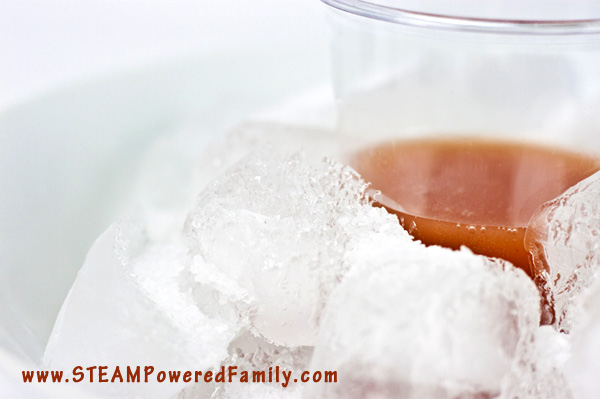
Now wait. And wait. Then wait some more.
To help pass the time, take regular readings with a non-contact digital infrared thermometer and discuss what is happening. Also study what is happening to the ice cubes. It is quite interesting to watch the way they break down from the ice.
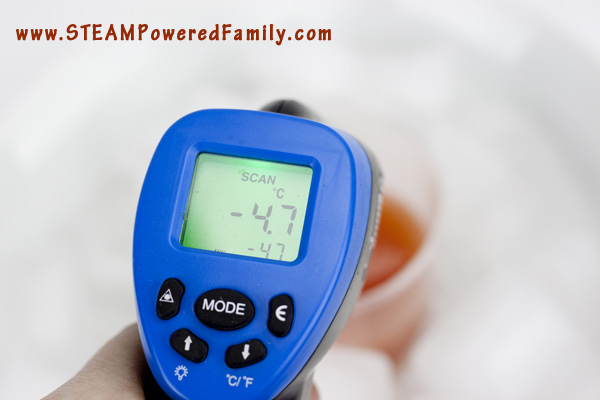
Stir the juice gently every 30 minutes. It can take anywhere from 1 to 2 hours for the freezing to start, but once it does start stirring regularly or it will form into an ice cube. We made that mistake once! Make sure you scrape the freezing juice off the sides of the glass and mix it all together.
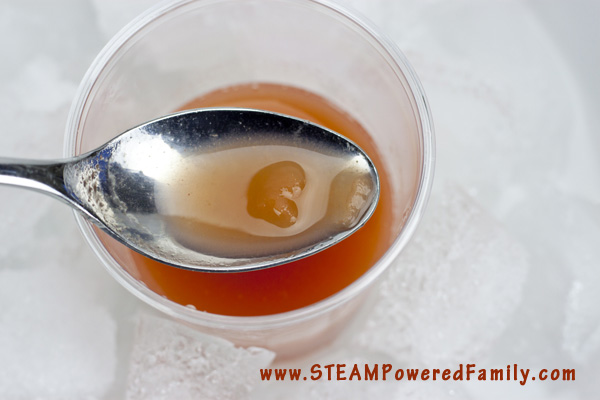
Your slurpee will continue to thicken up and once it reaches the desired thickness (we could stand the spoon up in ours!), it is ready to drink.
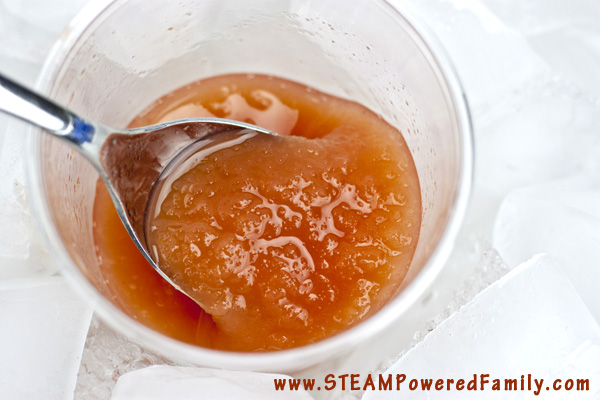
Add a straw and enjoy your sweet slurpee science!
The Science Behind Sweet Slurpee Science
In this experiment we are applying the principles of heat transfer and the effect of salt on ice that we learned in our Salt and Ice STEM Activity. In a nutshell, the salt causes an endothermic reaction that pulls heat from around it to melt the ice. It does this so aggressively that it will drop the temperature around it to below freezing which allows our drink to go below freezing. We registered a low of almost -5C and it stayed at that temperature for a couple of hours without warming up. This allowed our juice to freeze. Then as long as we remembered to stir and break up those ice crystals so it didn’t form a block of ice, the result is a delicious frosty treat! To learn more about the science, visit our Winter STEM Activity.
Learning how to make a slurpee at home was a fantastic way to get the kids really excited about science. Give it a try, your kids will love these sweet homemade treats…. created with science!
Ready for another fun and yummy treat created with science? Learn how to make Ice Cream in a Bag!
